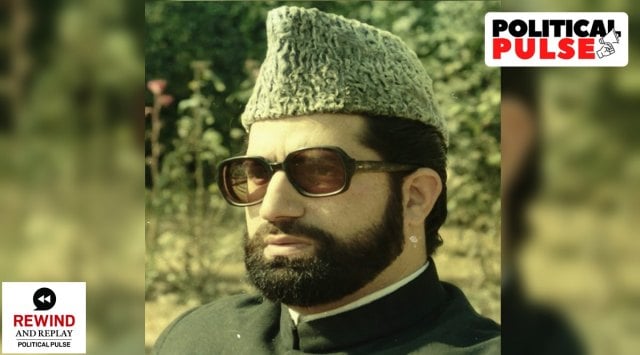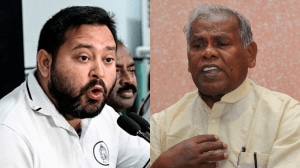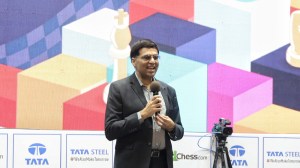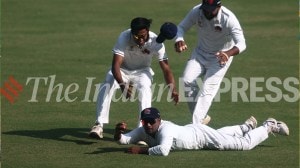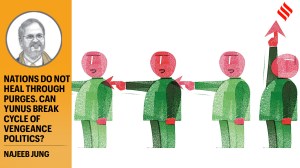On May 21, 1990, barely months after militancy had erupted in the then state of Jammu and Kashmir, the Kashmir Valley was shaken by a high profile assassination. Mirwaiz Mohammad Farooq, the Valley’s head priest (Mirwaiz), was shot dead by unidentified gunmen inside his home in Srinagar’s Nageen neighbourhood.
The assassination of Mirwaiz came barely a month after militants had abducted and killed the then vice-chancellor of Kashmir University, Professor Mushir ul-Haq, after they had failed to secure the release of their jailed associates in his exchange. While a militant group — Students Liberation Front — had claimed responsibility for Haq’s abduction, no outfit did that for the murder of Mirwaiz Farooq. In response to the government accusing the militants for the assassination, the latter put the blame on Indian security agencies, claiming they had hatched a plot to murder Mirwaiz.

It was a time when Kashmir was witnessing a groundswell in the demand for Azaadi (freedom), and people were not ready to accept that the militants, who spearheaded the demand, could kill a religious and political leader, that too one who had a huge following in the Old City and whose family had stood for Kashmir’s accession to Pakistan.
Story continues below this ad
The events that had unfolded that afternoon had also helped the militants get away without scrutiny. When a huge procession of people were taking Mirwaiz’s body from the hospital to Mirwaiz Manzil in the Old City, paramilitary forces opened fire at them, killing over 60 mourners and wounding over 200. The infamous incident came to be known as the Hawal massacre, following the name of the place where the mourners were fired upon.
The anger arising from Mirwaiz’s killing soon turned into anger against the paramilitary forces and the then J&K Governor Jagmohan, who had been appointed by the Centre to quell the pro-Azaadi groundswell in the Valley.
In the everyday politics of Srinagar city, the two families — Abdullahs and Mirwaiz — stood poles apart. While the Abdullahs were seen as pro-India, the Mirwaiz family was staunchly pro-Pakistan. When Sheikh Abdullah and Chowdhary Ghulam Abbas founded the Muslim Conference in 1931, Moulvi Yousuf Shah was also its founding member. But when Abdullah indicated that he wanted to disband the Muslim Conference to form a secular National Conference, the differences came to the fore. In 1947, Yousuf Shah visited Pakistan to meet Mohammad Ali Jinnah. But on his return, he was denied entry into the Valley upon the order of then Maharaja Hari Singh. Moulvi Yousuf Shah lived in Pakistan-occupied Kashmir (PoK) and became its president for two terms.
In Srinagar, as the head priests of the Valley, the Mirwaiz family exercised considerable influence, especially as the pulpit of Srinagar’s historic Jamia Masjid was under their control. In 1964, Mirwaiz Farooq founded the Awami Action Committee, a socio-religious political party. It was the time when Sheikh Abdullah was the undisputed leader of Kashmir and the only semblance of opposition was given by the Mirwaiz family, something Abdullah didn’t like much. This led to the widening difference between Abdullah’s National Conference and the Mirwaiz family. The acrimony grew so much that their supporters often clashed.
Story continues below this ad
In 1983, Sheikh Abdullah’s son Farooq Abdullah and Mirwaiz Farooq joined hands in what came to be known as the ‘Double Farooq Accord’. This was the first reconciliatory step to end the Sher-Bakra feud in Kashmir. Traditionally, the followers of Sheikh Abdullah, also called Sher-i-Kashmir, were known as ‘sher (lion)’, while the followers of Mirwaiz were called ‘bakra (goat)’.
Though Mirwaiz Farooq wielded considerable influence, it was limited to Srinagar. He had very few followers in other parts of the Kashmir Valley.
According to police, militants of Hizb-ul Mujahideen, led by its then deputy chief Mohammad Abdullah Bangroo, had plotted the murder of Mirwaiz Farooq, as he was seen as a “peacenik and an Indian agent”. After his murder, his son Mirwaiz Mohammad Umar Farooq, who was just 17 years old at the time, was appointed the Mirwaiz of Kashmir.
But the narrative that developed after the killing of the mourners by Indian paramilitary forces, and the inclination of Mirwaiz supporters towards Pakistan, helped the militants escape blame. In fact, three years later at the age of 20, Mirwaiz Umar became the founding chairman of the separatist conglomerate Hurriyat Conference that was backed by militant groups.
Story continues below this ad
Now, in an apparent “breakthrough” 33 years later, the J&K Police on Tuesday claimed to have arrested two of the militants who they accuse of having killed Mirwaiz. The other three accused were either killed or arrested in the interim. They include the person who the police claim had pulled the trigger on Mirwaiz.

